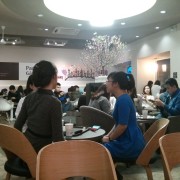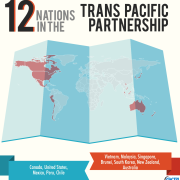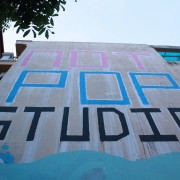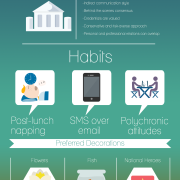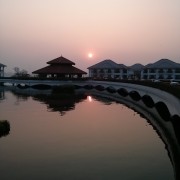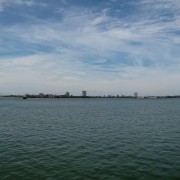Vietnam Today
Vietnam means different things to different people—some of these perceptions change every day, every year, or every visit and some of them remain frozen in time.
Tradition. An untapped opportunity. A glorious past. Increasing competition. The Fatherland. Independence. Echoes of war. A bright future. A rising dragon. The party. People of the sea. Resilience. Freedom. Children of the mountains. Liberalization. Home. Happiness.
So, what is Vietnam today? This post attempts to encapsulate daily life in Vietnam as a snapshot of some of the most common sights, sounds, and experiences in the country today. Some items on this list are not exclusive to Vietnam (or even Asia) but they are still noticeable in daily life in a major city like Ho Chi Minh City or Hanoi.
Vietnam is the land of…
1. “Selfies”
If you go out one night in either Hanoi or Ho Chi Minh City, you’ll probably find people taking selfies or self-captured photos. There are certain requirements for where and when one should take a selfie, including being with a significant other, before eating, being with friends, and generally anywhere and everywhere in between. The ubiquity of smart phones in Vietnam allows for the endless flow of media experiences to be captured, shared, and commented on to form an constant feedback loop.
2. Cafes
The cafe is an important part of life for Vietnamese. They are used for a bunch of core activities including meetings, relaxing, literally sitting around, playing games (multiplayer and single player), and to communicate status. Some common drinks are cafe sua da (also known as cafe no da in the north), xinh to xoai, and tra da. The cafe culture here is strong, rich, and all-encompassing but still very different in parts of the country.
3. iPhones
Not just smartphones, but Apple iPhones. These devices are seemingly everywhere and can be seen used by celebrities as well as (some) shopkeepers and street vendors. One way that the number of iOS devices increase in the country is through family: as people upgrade their handsets to the latest models, they pass on their older models to family members. There are millions of iOS devices in Vietnam but the app marketplace is largely fragmented with third party app portals.
4.Honking
A sea of traffic, clouds of exhaust, and incessant honking. Many Vietnamese drivers seem to use the horn simply because it is there. Another large portion seem to use the horn as if were sonar by sending out “pings.” The horns here seem to be at least 30% louder than US models and we could see custom horns emerge here similar to how there are custom ringtones for phones.
5. Wi-Fi
There is no need to ask if a venue has WiFi since it’s more efficient to ask what the password is (usually 12345678 or some similar variation). Almost every cafe or restaurant provides free Wi-Fi (that works when an undersea cable isn’t damaged). The widespread availability of Wi-Fi could pose a cyber security risk in the future, especially if the lax attitude toward privacy continues here.
6. Motorbikes
Vietnam is the world’s fourth largest market for motorbikes. During rush hour, motorbikes form rivers, which larger vehicles attempt to ford or cut through with impatience. Trying to navigate an intersection with other motorbikes is probably akin to being in a mechanized phalanx. Companies like Yamaha Motors Vietnam need to position themselves carefully considering that the Vietnamese dream is to drive to work in a car.
7. New construction
Drive around Hanoi and you can hear and see the future of Vietnam. Fly into Ho Chi Minh City and you can see the cranes that dot the city from above. Some future projects will be added to an already large real estate inventory (with outrageous prices per square meter) while smarter developers will find ways to differentiate their projects via advanced automation, control, and integration technologies in buildings to benefit end-users (and ultimately, to increase ROI).
8. Recycling
“Reduce, Reuse, Recycle” here is “Resell, Reuse, Repurpose.” Empty water bottles are collected and sold to recyclers. Anything that is not completely broken or destroyed is used or repurposed until it falls apart. It’s one of the most efficient aspects of Vietnam—especially when contrasted to some western habits of instantly replacing or upgrading appliances.
9. Name Brands
Nouveau riche are rising in status and increasing in numbers. Of course they are flocking to luxury brands but some lack the sophistication that usually comes with style. As they say, “money doesn’t buy class” so there is opportunity for etiquette schooling and training, especially in the north.
10. Youth
Young people are everywhere and although there are far too many banking and finance majors, they are the future of Vietnam (as cliched as it may be). A segment of them are break dancing, popping, locking, and dropping their ways into adulthood while those studying STEM subjects seem to be diving headlong into startups and IT outsourcing. Right now, many young Vietnamese idolize KPOP stars and are hungry for American culture—but they will all eventually craft their own styles.
11. Touch
Personal space does not exist here. Touching, at times inappropriately (from western point of view), is a way to communicate (since much of Vietnamese language relies on context). Couples (not just romantic ones) can be seen walking together in a semi-drunken stagger while talking loudly, laughing, or sharing some inside joke. Be prepared to “pinball” off some people in crowded public spaces as space is at a premium. Co-workers regularly and playfully slap each other; a sign of affection.
12. Drinking
Drinking and Vietnam go hand-in-hand. Beer Hanoi, Beer Saigon, Beer Truc Bach (the finest beer in Vietnam), Beer Halong, Beer Hue—you get the idea (those are all beer brands, by the way). Then there is ruou, rice alcohol which can come in a variety of flavors. Drinking is an occasion for bonding, building soft relationships with counterparts, and for social (and professional) lubrication.
13. Smoking
Cigarettes, traditional bongs, and hookah. Non-smokers are in for a rough time in Vietnam—there’s always someone smoking nearby (usually Marlboro or Thanh Long brands). Smoking is allowed indoors and is encouraged in nightlife spaces. The air quality already is not great in major cities like Ho Chi Minh City and Hanoi—the longterm health implications of these combinations are alarming. Purchases and installations of air and water filtration systems will become more common as Vietnamese seek to protect their children from harmful exposure to pollutants.
14. Music
Music is used to attract customers on the street, to drown out one’s senses in nightclubs, and just because someone is in the mood to blast it. Young people on the street break out into impromptu ballads or sing along with songs in unison. Overall, music here is dangerously loud and Vietnamese will pay the price for these unsafe audio levels in the form of fees to audiologists.
15. Stares
Everyone stares here, especially if you are an attractive woman, a foreigner, or are different in any way, shape, or form—in that case then they stare at you as if you are an alien. A simple smile or wave can break the ice but coming from a culture where staring is considered impolite, it can be jarring to some.
20 Years (+/-)
Twenty years ago this list would have been radically different except for a few items. Most vehicles on the roads were bicycles at that time. Imagine what a snapshot of Vietnam will be in the year 2035 with approximately 110 million people. Unrecognizable? Some parts Bangkok and other parts Hong Kong? Sustainable eco-tourism? A center for innovation in Southeast Asia?
In the early 20th century, the population of Vietnam was about 20 million. Today, Vietnam has over 90 million people. Vietnam is rapidly changing; some changes are positive and while others are unclear. What will be Vietnam’s role as we continue deeper into the 21st century? Only time will tell but one thing is certain—the pace of change here will surely increase.

